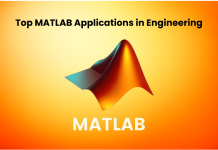Once an operational outlier, machine learning (ML) is now an IT industry priority and a key component of everyday applications. A subset of artificial intelligence, machine learning is the ability for algorithms to solve basic problems and intelligently adjust outputs to match input data more effectively.
In practice, well-built ML code can make relevant recommendations or identity specific user behavior to help apps provide increased value. Worth noting? There’s also a largely silent partner in this programming progression: Python.
Here’s a look at five machine learning applications delivering real-world value — and powered by Python. Courtesy of Accelebrate.
-
Intelligent Content Recommendations
Social media users don’t want recycled content — they want new recommendations that align with their preferences and predilections. Here, Python-powered machine learning apps make it possible for popular services such as Instagram to intelligently assess user behavior and make content suggestions in real-time.
In fact, the feature is so seamless and ubiquitous that users often don’t notice it in practice. Thanks to clean, customizable code, Python is the go-to for any content recommendation app, and thanks to its ease-of-integration with multiple language libraries, Python paves the way for more advanced assessments of user content queries.
-
Adaptive Translation Services
It’s one thing to translate words or phrases into another language — it’s something else for these translations to go beyond basic conversion and include critical context. By combining the power of translation services with the adaptability of phyton programming, it is now possible to create text-to-speech tools capable of quickly and accurately converting communications across language barriers.
While we’re still a long way off from the universal translators seen in sci-fi franchises such as Star Trek, Python provides the unobtrusive foundation required to help app developers address this contextual communications gap.
-
Fraud Detection and Prevention
Online commerce fraud can cost companies more than $12 billion per year — and recent pandemic pressures have pushed this problem even further into the security spotlight. While tackling fraud tactics in-store is fairly straightforward with digital security cameras and on-site observation, detecting duplicitous action online is more problematic: How do eCommerce sites separate legitimate transactions from fraudulent purchases using only digital activity data?
Here, Python is helping change the game as part of the Amazon Fraud Detector service, which leverages massive datasets and advanced machine learning to create robust and responsive detection models capable of taking into account multiple user behaviors and identifying potential fraud within minutes.
-
Predictive Communications
As online interactions shift away from traditional desktops to mobile devices, new modes of communication are emerging. Text messaging has now taken top spot over older methods such as phone conversations or emails, but it comes with the challenge of hit-or-miss accuracy when users hurriedly type a message to friends or family.
To solve this problem, predictive apps capable of analyzing current text and suggesting potential next steps have emerged. Anticipatory autocorrect is a common example. However, Python also underpins new apps such as Dango, which uses advanced machine learning to understand text messages and suggest relevant emojis, stickers and GIFs.
-
Visual Identification
What you see is what you get, but what happens when you’re not sure what you’re seeing? While the realm of augmented site solutions has seen its fair share of potential game-changers that ultimately became also-rans — remember Google glass? — Python is helping organizations build applications capable of leveraging smartphone cameras to intelligently identify complex visual inputs and deliver accurate results.
One such project is LeafSnap, created as a joint effort between the Smithsonian and computer scientists at the University of Maryland and Columbia. This free app uses ML algorithms to correctly identify 90% of all plant life on Earth — what’s more, citizen scientists can upload their photos to help the app develop even better input/output connections.
Snakes and Ladders
As machine learning initiatives advance, there is a need for solid programming supports that are able to adapt to input variety and improve output accuracy. Python offers a stable starting platform with clean, user-friendly code that empowers companies to build out key functionality without sacrificing feature or form.












